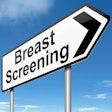Dear Digital X-Ray Insider,
Assessing the presence of pleural adhesions is a crucial step when planning surgery for patients with lung disease, as these adhesions can complicate procedures. With an eye on establishing an imaging approach that requires less radiation than standard imaging, a team in Japan recently tested dynamic chest radiography (DCR). The results are promising, according to the researchers, and you can read about the trial in this edition's Insider Exclusive.
That's not all for DCR, which also showed promise recently as a less-invasive tool than right heart catheterization for assessing hemodynamics in patients with heart failure.
In addition, another experimental x-ray system -- dark-field chest x-ray -- continues to reveal its potential in a study that showed it can acquire diagnostic attenuation-based x-rays comparable to those from conventional systems.
Meanwhile, artificial intelligence (AI) research using x-ray imaging continues to be a major focus, with one study presented at ECR 2023 by a team in Berlin suggesting that radiology residents achieved a significant increase in sensitivity after viewing AI analysis following their initial interpretation. The following are several other AI studies we covered:
- Researchers from Mahajan Imaging in India and AI firm Carpl.ai found that an application called ChestEye Quality (Oxipit) detected a low but significant number of missed findings in chest x-rays.
- A group in Denmark assessed another application from Oxipit (ChestLink) and found the tool could significantly improve radiology workflows by autonomously reporting whether chest x-rays are normal or abnormal.
- A group in Germany tested the performance of a commercial chest x-ray AI software application and found it could prove useful for confirming negative findings on chest x-rays.
Additionally, Korean radiologists appear to be having positive experiences with AI, according to a recent survey study.
In interventional radiology (IR), we covered several studies that focused on thrombectomy for stroke patients. In one, researchers reported that patients worldwide have "dismal" access to the procedure; in another, researchers mined a large national stroke registry and identified risk factors that may be involved in poor outcomes.
Speaking on IR, we highlighted a study by a team at HonorHealth Heart Group in Scottsdale, AZ, that found a new radiation exposure shield designed to provide total-body protection could allow radiologists in cardiac catheterization labs to ditch burdensome lead aprons.
Finally, we noted a news report on the British Army's website about a sergeant who reported being the only working radiographer in a 180-mile radius after arriving with a medical team to help people injured in earthquakes in Turkey.
That's all for now. Be sure to check back often for more news in your Digital X-Ray Community.




















